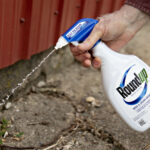BILLINGS, Mont. (AP) — U.S. officials said Thursday that they will try to stamp out wildfires as quickly as possible this year as severe drought tightens its grip across the West and sets the stage for another destructive summer of blazes.
By aggressively responding to smaller fires, officials said they hope to minimize the number of so-called megafires that have become more common as climate change makes the landscape warmer and dryer.
A similar approach was taken last year, driven in part by the pandemic and a desire to avoid the large congregations of personnel needed to fight major fires. Nevertheless, 2020 became one of worst fire years on record, with more than 10 million acres (4 million hectares) of land scorched and almost 18,000 houses and other structures destroyed, according to federal data and the research group Headwaters Economics.
California was especially hard-hit, including one fire in the northern part of the state that topped a million acres (400,000 hectares).
Interior Secretary Deb Haaland and Agriculture Secretary Tom Vilsack told firefighting personnel Thursday to brace themselves for another challenging year given the historic drought conditions.
Haaland and Vilsack wrote in a memo to fire leaders that, “90 percent of the West is currently experiencing drought.”
“These conditions have not only increased the likelihood of wildfires but they have also strained water supplies and increased tensions in communities,” they wrote.
A shortage of resources last year hobbled firefighting efforts for more than two months at the height of the season. Twelve people involved in firefighting efforts were killed as were at least 45 civilians in Oregon and California, federal officials said.
For 2021, the Biden administration is seeking a 4% increase in wildfire fighting spending — to $2.5 billion — for the U.S. Departments of Agriculture and Interior. An additional $1.7 billion is sought by the Forest Service to manage fire dangers including by thinning stands of trees, conducting controlled burns and other measures. That’s a $476 million increase, according to the White House.
Was this article valuable?
Here are more articles you may enjoy.

 Bayer Gets Supreme Court Hearing in Challenge to Roundup Suits
Bayer Gets Supreme Court Hearing in Challenge to Roundup Suits  Singer’s Elliott Sued by PE Firm in Escalating Fight Over Money
Singer’s Elliott Sued by PE Firm in Escalating Fight Over Money  Palantir Poaching Suit Called ‘Scare’ Tactic by Ex-Employees
Palantir Poaching Suit Called ‘Scare’ Tactic by Ex-Employees  The Return Period for An LA Wildfire-Scale Event May Be Shorter Than You Think
The Return Period for An LA Wildfire-Scale Event May Be Shorter Than You Think 